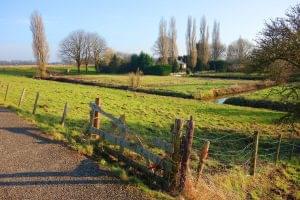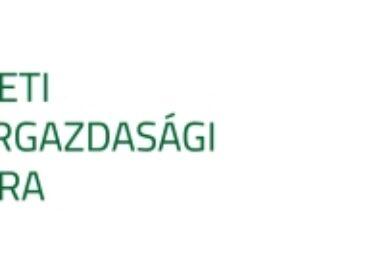New support is coming for the preservation of valuable areas from a climate protection point of view
Within the framework of the Common Agricultural Policy (KAP) starting in 2023, the Ministry of Agriculture will also make the basic support for agricultural land available for areas valuable from the point of view of the environment, climate protection and biodiversity.

The support improves the quality of the land and its ecosystem (Photo: Pixabay)
According to the department, this change will encourage farmers on hundreds of thousands of hectares to preserve the forest strips protecting the fields, the meadows, the coastal strips of watercourses, and their wet or salty areas. Therefore, the stimulation of more sustainable agricultural production begins with the designation of the areas eligible for support, in order for the basic area-based income support to improve the condition of the ecosystems related to agriculture.
Such land areas are among those to be supported
On the basis of the EU regulation on KAP strategic plans – breaking with the decades-old ban – it became possible to include in the concept of “subsidy-eligible hectare” in addition those areas not under cultivation and landscape elements which:
• must be maintained within the framework of the correct Agricultural and Environmental Status (HMKÁ) or the agro-ecological program (AÖP),
• due to other obligations (e.g. Natura 2000 regulations, afforestation, etc.) they previously did not meet the concept of eligible hectares,
• previously used as arable land or lawn, but in the future it will be converted into a wooded strip, a wetland or any of the types of land listed above.
Requirements must be met in exchange for support
In the period until December 31, 2022, based on the EU rules, area-based support can only be used in agricultural areas, where so-called minimum requirements must be observed. Although these regulations helped to keep agricultural areas in a state of cultivation, for example avoiding excessive weeds, they are not always favorable from an ecological point of view. The practice of the past decades has shown that the EU support system, which encourages compliance with the minimum requirements and the achievement of the largest eligible area, was not conducive to the preservation of field edges, field protection strips, waterlogged areas or even inland water spots. Expanding the range of areas eligible for direct area-based support effectively contributes to improving the soil condition, microclimate and water balance of agricultural areas, as well as increasing the diversity of related habitats. With the new measure, the Ministry of Agriculture would increase the eligible areas by around one hundred thousand hectares. In this way, it can be ensured that the basic area-based income support does not lead producers to unreasonable increase of productive areas at the expense of non-productive areas, and would even encourage the adaptation of production to changed climatic conditions.
Related news
More than 100 Hungarian farmers also demonstrated in Brussels
🎧 Hallgasd a cikket: Lejátszás Szünet Folytatás Leállítás Nyelv: Auto…
Read more >Young farmers in the EU: lack of capital remains a key issue in generational change
🎧 Hallgasd a cikket: Lejátszás Szünet Folytatás Leállítás Nyelv: Auto…
Read more >Hungarian farmers made their voices heard in Brussels
🎧 Hallgasd a cikket: Lejátszás Szünet Folytatás Leállítás Nyelv: Auto…
Read more >Related news
How do young adults celebrate?
🎧 Hallgasd a cikket: Lejátszás Szünet Folytatás Leállítás Nyelv: Auto…
Read more >Vajda-Papír celebrates Ooops!’s 15th anniversary with a hybrid AI campaign
🎧 Hallgasd a cikket: Lejátszás Szünet Folytatás Leállítás Nyelv: Auto…
Read more >Pre-holiday shopping at up to half price
🎧 Hallgasd a cikket: Lejátszás Szünet Folytatás Leállítás Nyelv: Auto…
Read more >






